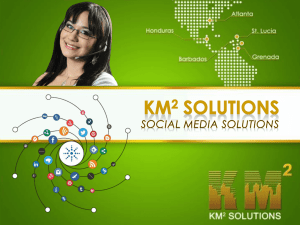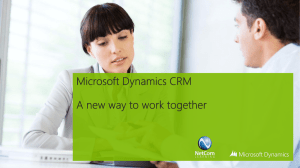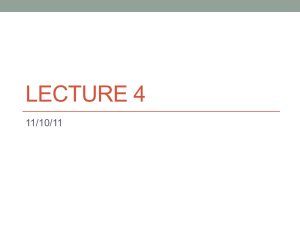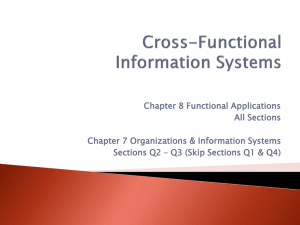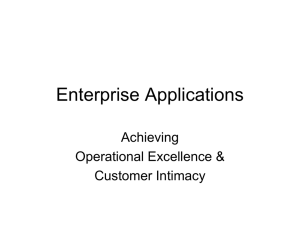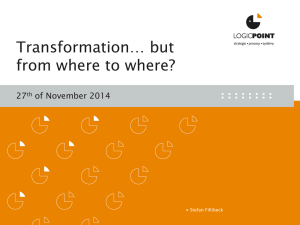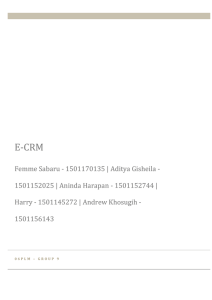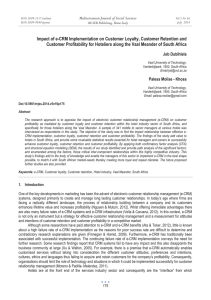Management Information Systems
advertisement
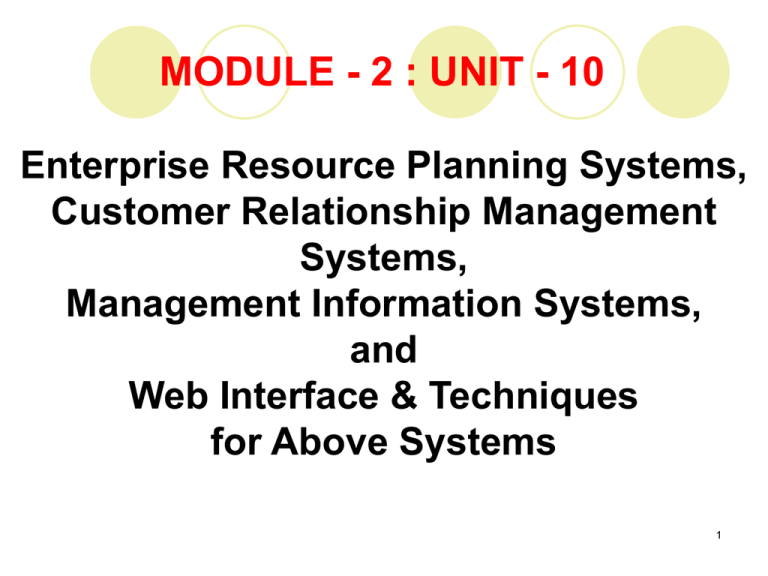
MODULE - 2 : UNIT - 10 Enterprise Resource Planning Systems, Customer Relationship Management Systems, Management Information Systems, and Web Interface & Techniques for Above Systems 1 “Smile - It's the second best thing you can do with your lips.” Learning Objectives Understand the essentials of enterprise systems Describe the need for integrated software and how ERP does it. Describe CRM and its support by IT Understand MIS and its functions Understand Web Interface and Techniques 3 ERP SYSTEM 4 ESSENTIALS OF ENTERPRISE SYSTEMS ERP ERP or enterprise systems control all major business processes with a single software architecture in real time. It is comprised of a set of applications that automate routine back-end operations such as: financial management inventory management scheduling order fulfillment cost control accounts payable and receivable It includes front-end operations such as: POS Field Sales Service It also increases efficiency, improves quality, productivity, and profitability. 5 ESSENTIALS OF ENTERPRISE SYSTEMS AND SUPPLY CHAINS 6 Functions of ERP Systems 7 CRM SYSTEM 8 Customer Relationship Management (CRM) CRM recognizes that customers are the core of a business and that a company’s success depends on effectively managing relationships with them. It focuses on building long–term and sustainable customer relationships that add value both for the customer and the company. Types of CRM Operational CRM Analytical CRM Collaborative CRM 9 Customer Relationship Management (CRM) Applications 10 Customer Relationship Management (E-CRM) CRM has been practiced manually by corporations for generations. However, E-CRM (electronic CRM) started in the mid-1990’s ,when customers began using Web browsers, the Internet, and other electronic touch points. 11 Customer Relationship Management (E-CRM) (contd.) THE SCOPE OF E-CRM. We can differentiate three levels of e-CRM: Foundational service. This includes the minimum necessary services such as Website responsiveness (e.g., how quickly and accurately the service is provided), site effectiveness, and order fulfillment. Customer-centered services. These services include order tracking, product configuration and customization, and security/trust. These are the services that matter the most to customers. Value-added services. These are extra services such as online auctions and online training and education. 12 Customer Relationship Management (CRM) Activities Customer Service on the Web Search and Comparison of Capabilities Free Products and Services Technical and Other Information and Service Allowing Customers to Order Products and Services Online Letting Customers Track Accounts or Order Status 13 Customer Relationship Management (CRM) Activities (contd.) Tools for Customer Service Personalized Web Pages FAQs Chat Rooms E-Mail and Automated Response Call Centers Troubleshooting Tools Wireless CRM 14 15 Management Information System (MIS): Management level Inputs: High volume data Processing: Simple models Outputs: Summary reports Users: Middle managers Example: Annual budgeting 16 Management Information Systems (MIS) These systems access, organize, summarize, and display information for supporting routine decision making in the functional areas. Geared toward middle managers, MIS are characterized mainly by their ability to produce periodic reports such as a daily list of employees and the hours they work, or a monthly report of expenses as compared to a budget 17 Management Information Systems (MIS) (contd.) Typical uses would be in Replenishment, Pricing Analysis (Markdowns) and Sales Management Decisions supported are more structured Primary purpose to process data into information Provides reports based on routine flow of data Assists in general control of the orgn. 18 Management Information System (MIS) 19 Management Information System (MIS) Structured and semi-structured decisions Report control oriented Past and present data Internal orientation Lengthy design process 20 Managerial Issues How much to integrate? Role of IT Organizational adaptability The Customer is king/queen Set CRM policies with care 21 END OF MODULE - 2 : UNIT - 10 Enterprise Resource Planning Systems, Customer Relationship Management Systems, Management Information Systems, and Web Interface & Techniques for Above Systems 22




